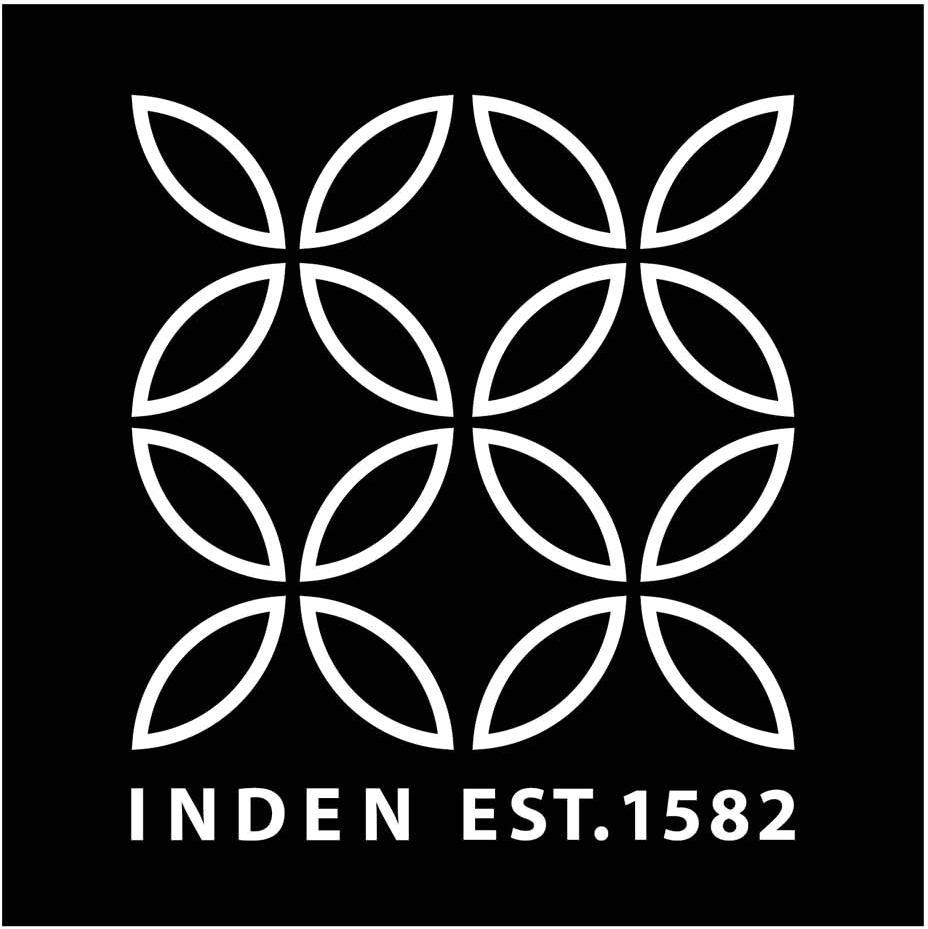“In order to continue being a product that people can believe in, we are have to be committed to innovating and aiming for the next best thing. “
- Leather processing/leather sewing -
The four sides of the leather are strained or trimmed to match the color and pattern of the leather and to maintain uniform thickness. The corners are then beautifully trimmed by sewing in radial folds called kikuyose.
The Indenya leather processing team performs all the work until the finished product is thoroughly inspected by hand.
What inspired you to become a leather seamstress?
Mr. Ito decided to become a leather craftsman as he’s loved making things since he was a child. When he was looking for a job where he could be involved in production, he was attracted to the "traditional craft" aspect of Inden, and he got a job sewing leather for Koshu Inden. He later moved to Yamanashi, where he has been working for 24 years.
Work at Indenya and Tradition
Craftsman Ito has been sewing leather for 24 years. He learned the technique by watching his seniors and repeated the process of disassembling and reassembling products until he begun to reach mastery. He thins leather, cuts and assembles fabric, and joins the leather together to create the Inden products loved today.
There is no limit to his creativity, so even after 24 years, he says he is still in training. He is focused on always improving in order to always create better products.
Given his dedication to maintain the Inden brand, he not only crafts new Inden items, he also leads the team who work on repairs. With his expertise, his team of craftsman are able to understand the materials and repair without manuals or scripts.
We asked Craftsman Ito about the history of Inden-ya, which has been around for 400 years. He said that, of course, it is important to preserve tradition, but that is not the most important thing. The most crucial thing is the spirit of always making good products. 400 years of Inden-ya's history has remained unchanged because of this spirit. He has only worked for Inden 24 of the 400 years, but he still feels strongly about the need to connect to the next generation. He says that what he values when teaching the next generation and gives advice on how they too can infuse their craftsmanship into the legacy of Inden.
Changing Tools, Unchanging Technology
Long before iron needles arrived in Japan, people used animal bones and stones for sewing.
Difficulty in leather sewing technology
The creation of small items such as card cases and pen cases, some of Inden’s most popular items is time-consuming and difficult. The smallest parts are sewn by hand, and the rest is sewn with a sewing machine, so small products sometimes take longer to make. Each product has different parts to account for, and it is important to understand each piece of each product at Inden-ya.
When matching leather to leather, it is necessary to sew so that the patterns match. In addition, Indenya leather is processed with lacquer and has an uneven, suede surface, which makes sewing even more difficult than with ordinary leather. Deerskin is difficult to clean, so great care is required when sewing. It is only Craftsman Ito, who knows Indenya's products and is well versed in the Inden technique, who is able to work with these items create beautiful products.
Changing with the times
In the Nara period, Inden technology was used for treasures in Shosoin, saddlecloth, and obitori. In the Heian period, it was used for large armor and kemari. In the Kamakura and Muromachi periods, it was used for purses and cigarette cases. In the early modern period, it was used for purse and cigarette case. And In modern times, it’s used to create beautiful timeless pieces. The use of Inden technology has been changing with the times but the dedication has not.
Attractiveness and satisfaction of Inden
When customers pick up an Inden product, Craftman Ito would like them to pay attention to the wide variety of colors and patterns. The number of colors and patterns is infinite. The charm of Inden lies in the ability to purchase products and patterns that are not only in line with the times but also include a long line of tradition. Whether stitched my hand or my sewing machine, Inden has stayed true to its roots.
He feels a sense of fulfillment when he completes a product. The fastest products can be completed in about 30 minutes, but elaborate products can take two to three days to complete. The moment deerskin is transformed into a product is the most rewarding moment for him as a craftsman.
Craftman Ito’s Best Yamanashi Spot
On his days off, Craftsman Ito enjoys taking walks, spending time walking or biking around the neighborhood is a blissful time for him.
The area around the Indenya head office is full of soothing nature, and also you can enjoy seeing Mt. Fuji which is located in Yamanashi Prefecture.
You can also enjoy other Yamanashi specialties such as udon noodles from Yoshida and beer.




